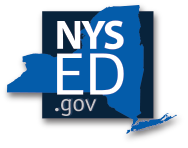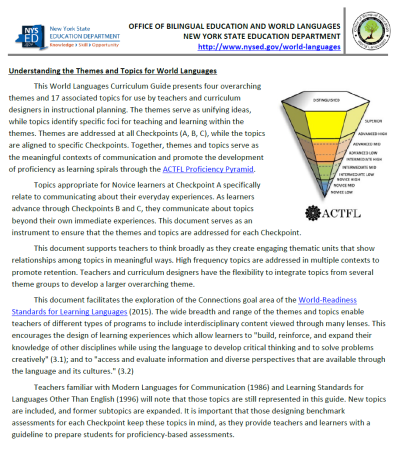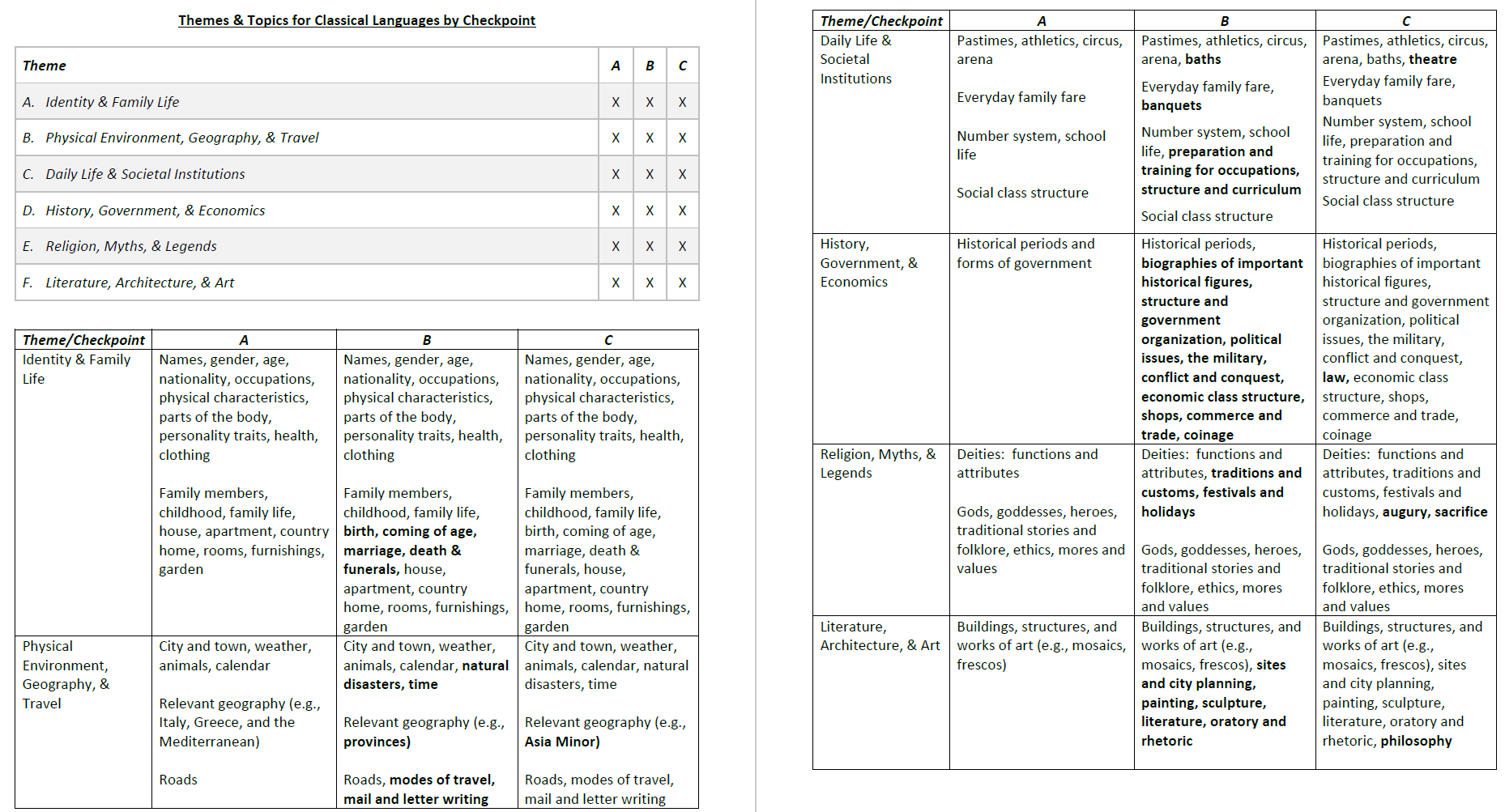Themes and Topics
The NYS Learning Standards for World Languages encompass four overarching themes and 17 associated topics for use by teachers and curriculum designers in instructional planning. The themes serve as unifying ideas, while topics identify specific foci for teaching and learning within the themes. Themes are addressed at all Checkpoints (A, B, C), while the topics are aligned to specific Checkpoints. Together, themes and topics serve as the meaningful contexts of communication and promote the development of proficiency as learning spirals through the ACTFL Proficiency Pyramid. Topics appropriate for Novice learners at Checkpoint A specifically relate to communicating about their everyday experiences. As learners advance through Checkpoints B and C, they communicate about topics beyond their own immediate experiences. This document serves as an instrument to ensure that the themes and topics are addressed for each Checkpoint.
Click here to download a PDF of the Themes and Topics document.
There are 13 required topics for Checkpoint A, 16 required topics for Checkpoint B, and 18 required topics for Checkpoint C. The grid to the right is contained o page two of the Themes and Topics document linked above. Note that when a topic must be addressed in a Checkpoint, an "X" appears in that Checkpoint's column. The topics listed for each Checkpoint represent a minimum requirement. Schools are able to include in their curricula more topics than listed should they wish. For example, "The Arts" is not a required topic for Checkpoint A according to this document, however, schools may include a thematic unit that addresses this topic in their Checkpoint A program, should they wish.
The aforementioned Themes and Topics document also include a list of themes and detailed topics and subtopics for classical languages (see image below).
Webpage last updated on July 29, 2025








